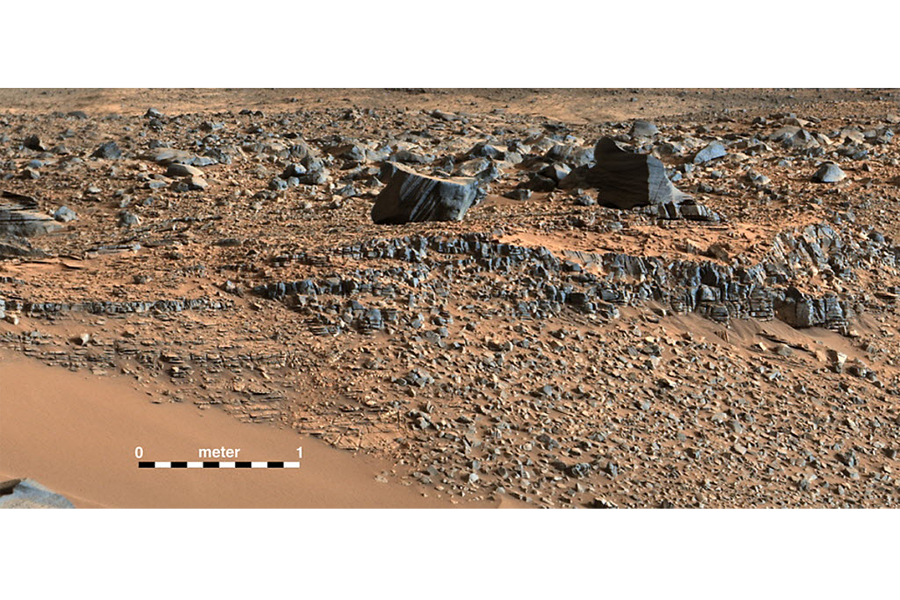NASA's Curiosity Mars rover finally makes it to Mount Sharp
Loading...
| Cape Canaveral, Fla.
NASA's Mars rover Curiosity has arrived at the base of a mountain of layered rock that scientists suspect holds clues about whether the planet most like Earth in the solar system had the ingredients to support and preserve signs of microbial life.
The 1-ton rover touched down inside an ancient impact basin in August 2012. It quickly discovered a region inside the Gale Crater landing site that was chemically and geologically suited for the same kind of rock-eating microbes commonly found on Earth.
With the primary goal of the mission met, scientists set about the more daunting task of finding environmental niches that not only could have hosted life, but also preserved signs of its existence - a tricky prospect since the same processes that make rock tend to destroy organic carbon.
Scientists figured their best chance for success lay inside rocks on Mount Sharp, a 3-mile high mountain rising from the center of Gale Crater.
After 18 months of driving, scientists on Thursday announced that Curiosity had arrived at the base of Mount Sharp ahead of schedule, thanks to a somewhat serendipitous decision to take an alternative path that would be gentler on the rover's damaged wheels.
Within two weeks, Curiosity will reach an outcrop of rock called Pahrump Hills, where the first drill samples of Mount Sharp real estate will be made, California Institute of Technology geologist John Grotzinger told reporters on a conference call on Thursday.
Scientists previously expected to cross the boundary between the cratered plains of Gale Crater and the relatively smooth rocks of Mount Sharp in a region called Murray Buttes.
"Curiously, because of the wheel damage it drove us on a pathway further south to be safer to the wheels and once we got to the location ... we recognized that in fact this was an even better place to go across the boundary than it would be to keep traveling toward Murray Buttes," Grotzinger said.
The decision to stop driving and start drilling should please a NASA oversight panel that earlier this month criticized the Curiosity team for short-changing the mission's science goals.
"When the senior review proposal was written in February and March the base of Mount Sharp looked kilometers away. In reality, we really cut out some of the drive time ... We're going to be starting to do much more science along the way," said Jim Green, director of NASA's planetary science division.







